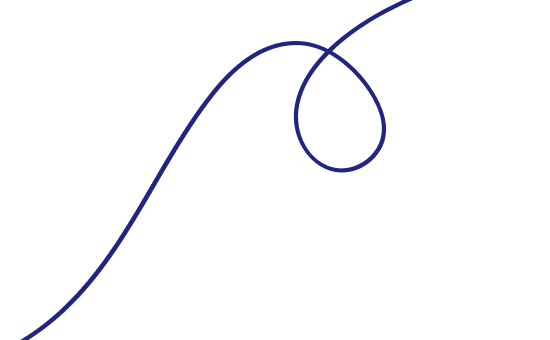
In the fast-paced world of data science, staying abreast of the latest tools and technologies is crucial for professionals seeking to derive meaningful insights from vast datasets. Python, with its simplicity and versatility, continues to be the go-to language for data scientists worldwide. As we step into 2024, let's delve into the top 10 Python libraries that are shaping the landscape of data science.
1. NumPy: The Foundation of Numerical Computing
At the core of many data science operations lies NumPy, a powerful library that facilitates numerical operations with ease and efficiency. NumPy's array-based approach and extensive mathematical functions make it an indispensable tool for tasks ranging from basic computations to complex linear algebra.
NumPy's ability to handle large datasets and execute operations in a vectorized manner significantly enhances the performance of data manipulation and analysis.
2. Pandas: Data Manipulation Made Seamless
Data scientists often find themselves immersed in the intricacies of data cleaning, exploration, and transformation. Pandas, a Python library built on top of NumPy, provides high-level data structures like DataFrame and Series, making data manipulation a breeze.
The DataFrame, in particular, is a tabular data structure that aligns with the structure of a spreadsheet or SQL table, making it intuitive for data analysis
3. Matplotlib: Visualizing Data with Ease
Data visualization is a key aspect of data science, and Matplotlib stands out as a versatile and customizable plotting library. Whether you're creating line charts, scatter plots, or bar graphs, Matplotlib offers an extensive range of options for visually representing data
Matplotlib empowers data scientists to convey complex information in a visually appealing manner, enhancing the interpretability of data.
4. Seaborn: Elevating Statistical Data Visualization
While Matplotlib serves as a powerful foundation for data visualization, Seaborn takes it a step further by providing a high-level interface for drawing attractive and informative statistical graphics. Seaborn is particularly useful for visualizing complex datasets with multiple variables.
Seaborn's elegant and concise syntax allows data scientists to create compelling visualizations with minimal effort, making it an invaluable tool in the data science toolkit.
5. SciPy: Advancing Scientific Computing
Working in tandem with NumPy, SciPy is a library that extends its capabilities and is specifically designed for scientific computing. SciPy encompasses modules for optimization, integration, interpolation, eigenvalue problems, and more. This library plays a crucial role in data science by providing advanced mathematical functions that go beyond the basics offered by NumPy.
SciPy's optimization functions are invaluable for solving complex problems encountered in various scientific and data-driven domains.
6. Scikit-learn: Machine Learning Made Accessible
In the realm of machine learning, Scikit-learn stands out as a versatile and user-friendly library that simplifies the development and deployment of machine learning models. Whether you're dealing with classification, regression, clustering, or dimensionality reduction, Scikit-learn provides a comprehensive set of tools.
Scikit-learn's intuitive interface and extensive documentation make it an excellent choice for both beginners and experienced practitioners in the field of machine learning.
7. Statsmodels: Unraveling Statistical Analysis
For data scientists delving into statistical analysis and hypothesis testing, Statsmodels provides a robust framework. This library offers a wide range of statistical models and tests, allowing users to explore relationships within their data and draw meaningful conclusions.
Statsmodels empowers data scientists to perform in-depth statistical analyses, aiding in the extraction of meaningful insights from datasets.
8. TensorFlow: Leading the Deep Learning Wave
In the dynamic landscape of deep learning, TensorFlow remains a powerhouse, offering a comprehensive platform for building and training neural networks. From image classification to natural language processing, TensorFlow supports a wide range of applications, making it a staple in the toolkit of data scientists working on complex tasks.
TensorFlow's flexibility and scalability make it an ideal choice for both research and production-level deep learning projects.
9. PyTorch: A Dynamic Approach to Deep Learning
As an alternative to TensorFlow, PyTorch has gained popularity for its dynamic computational graph, making it a preferred choice for researchers and developers. PyTorch's seamless integration with dynamic neural networks allows for easy experimentation and model development.
PyTorch's dynamic computational graph is particularly advantageous in scenarios where the network architecture needs to be modified on the fly.
10. NLTK (Natural Language Toolkit): Unleashing the Power of NLP
In an era dominated by vast amounts of textual data, natural language processing (NLP) plays a pivotal role in data science. NLTK, or the Natural Language Toolkit, provides tools for processing human language data, making it an essential library for tasks such as sentiment analysis, text classification, and language understanding.
NLTK's rich set of resources, including corpora and lexical resources, makes it a valuable asset for data scientists working on projects involving textual data.
Navigating the Data Science Landscape with Python
In the ever-evolving field of data science, Python libraries continue to be indispensable tools, enabling professionals to extract insights, build models, and derive value from complex datasets. As we explore the top 10 Python libraries for data science in 2024, it's evident that the synergy between these tools empowers data scientists to tackle a broad spectrum of challenges.
Whether you're engaged in numerical computing, machine learning, statistical analysis, or natural language processing, the Python libraries discussed in this blog post serve as pillars of support, offering both foundational capabilities and advanced functionalities. As you embark on your data science journey in 2024, consider incorporating these libraries into your toolkit to enhance your productivity and unlock new possibilities in the world of data.
Stay tuned for further updates and advancements in the dynamic landscape of data science. Happy coding!

Need Help With Your Project? Don't Hesitate To Reach Out To Us
